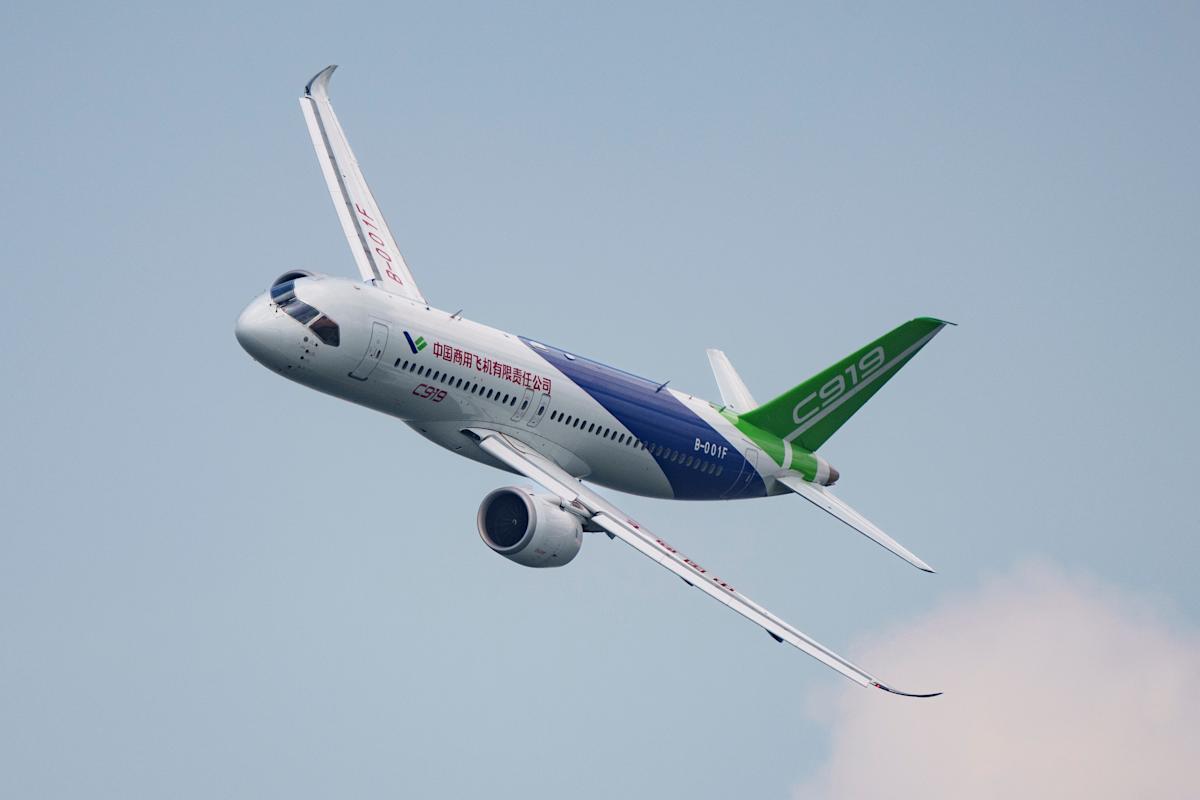
The Future of C919: Challenges and Opportunities


Hong Kong - China is reported to be facing serious challenges in meeting the targeted delivery numbers for the C919 passenger aircraft, developed to compete with Boeing and Airbus. The C919, produced by the state-backed aircraft manufacturer COMAC, is a single-aisle aircraft aimed at competing with Boeing's 737 and Airbus's A320 models.
Although Beijing showcases this project as a sign of technological progress and self-sufficiency in the country, many components of the aircraft are of Western origin. Trade disputes with Washington could hinder COMAC from obtaining the essential parts needed for this program. Max J. Zenglein, senior economist for the Asia-Pacific at The Conference Board, commented, "COMAC faces significant risks resulting from the volatile policy environment, as supply chains are vulnerable to export restrictions and reciprocal measures between the U.S. and China."
According to analysts from Bank of America, the C919 has 48 main suppliers from the U.S., 26 from Europe, and 14 from China. Former President Donald Trump had threatened to impose new export controls on "critical" software for China. Zenglein stated that "current bottlenecks are being exploited in the process of public influence" and added, "This situation will continue as critical dependencies become political bargaining chips."
Beijing has high hopes for the C919. The aircraft conducted its first commercial flight in 2023. This medium-sized jet is expected to meet China's significant domestic demand for new aircraft over the next few decades. The country aims to make sales beyond its borders, including in Asia, Africa, and Europe.
COMAC delivered 13 C919s to Chinese carriers last year, and as of October this year, it has only delivered 7 aircraft. In fact, they had plans to deliver 30 planes by 2025.
The largest state-owned airlines in China, such as Air China, China Eastern, and China Southern, currently operate around 20 C919 aircraft in total. However, the trade disputes between the U.S. and China have directly impacted the C919 delivery schedules. Dan Taylor, head of IBA aviation consultancy, reported that production plans were disrupted by the suspension of export licenses for LEAP-1C engines, noting that licenses were reapproved in July.
The LEAP-1C engines are dependent on technology jointly developed by GE Aerospace of the U.S. and Safran of France, meaning that the C919's engines require U.S. export approval. Taylor stated that these events have made the C919 "inherently sensitive to policy changes." He emphasized that the program's dependence on Western suppliers for engines and avionics exposes it to political decisions beyond COMAC's control.
Geopolitical tensions are not the only reason for the slower-than-expected production of the C919. The project has been characterized by a "cautious approach and prioritization of quality," so there may be some operational reasons for the slow pace of production. Zenglein mentioned that there has always been a goal to reduce the C919's dependency on foreign components as quickly as possible. However, analysts indicate that this process is challenging. China's alternative engine, the CJ-1000A, is being developed by the state-backed Aero Engine Corporation of China and is still in the testing phase.
Outside of airlines, several carriers like AirAsia have expressed a desire to operate C919 flights, but the lack of international certifications has so far prevented the C919 from leaving China. It is noted that obtaining certifications from U.S. and European Union aviation regulators could take years.
Richard Aboulafia stated that for the C919 to succeed, it needs to have international certification, a fast global product support network, and a robust economic structure, noting that even one of these factors alone may be insufficient.
Airbus predicts that China will need 9,570 new passenger aircraft between 2025 and 2044, with over 80% expected to be single-aisle jets like the C919. COMAC faces an increasing threat from Airbus as it plans to boost production of A320 single-aisle jets with a second assembly line set to begin operations in 2026. This aircraft model closely resembles the C919.
Experts forecast that it will take years for COMAC to break Boeing and Airbus's dominance in the global aircraft market. Taylor from IBA indicated the possibility of COMAC showing greater growth in China and possibly conducting regional exports by the end of the 2020s. In the short term, the lack of international certification is said to "block serious entry into the Western market" for the aircraft, and fluctuations in export controls are likely to continue weakening global expansion plans.
```.png)
Yakında Tüm Platformlarda
Sizlere kesintisiz haber ve analizi en hızlı şekilde ulaştırmak için. Yakında tüm platformlarda...









.png)